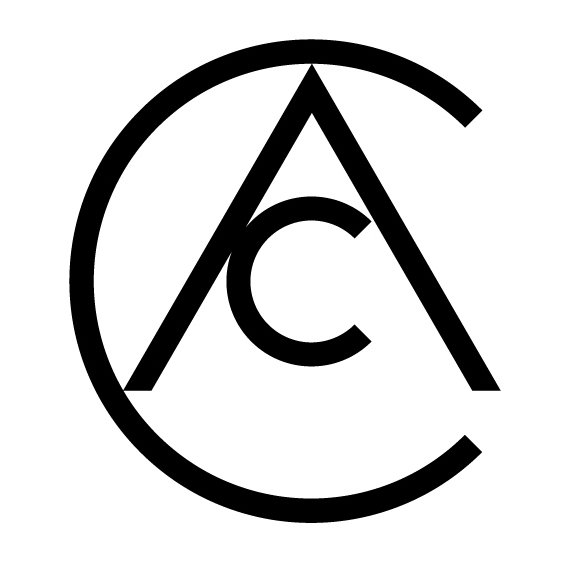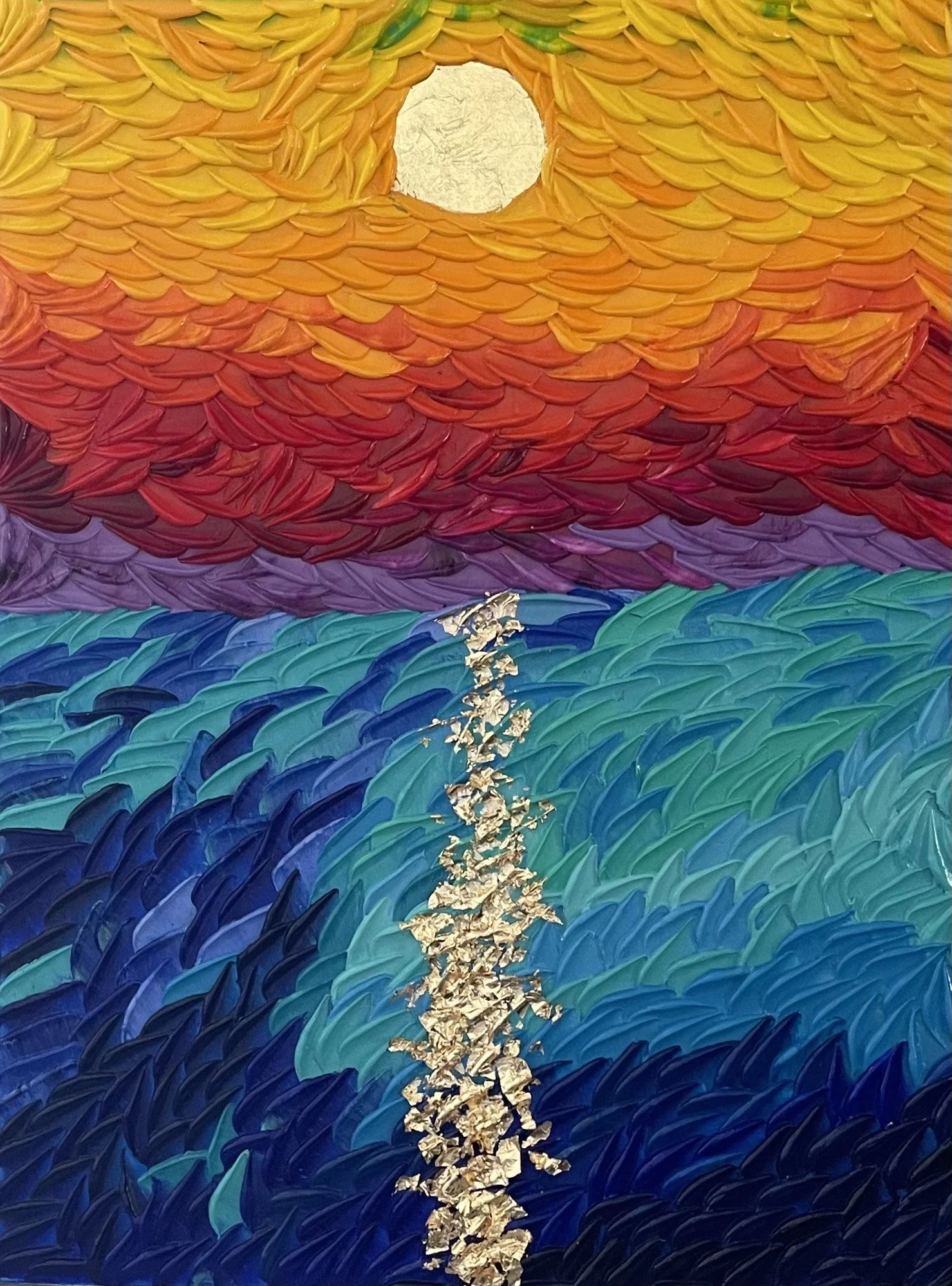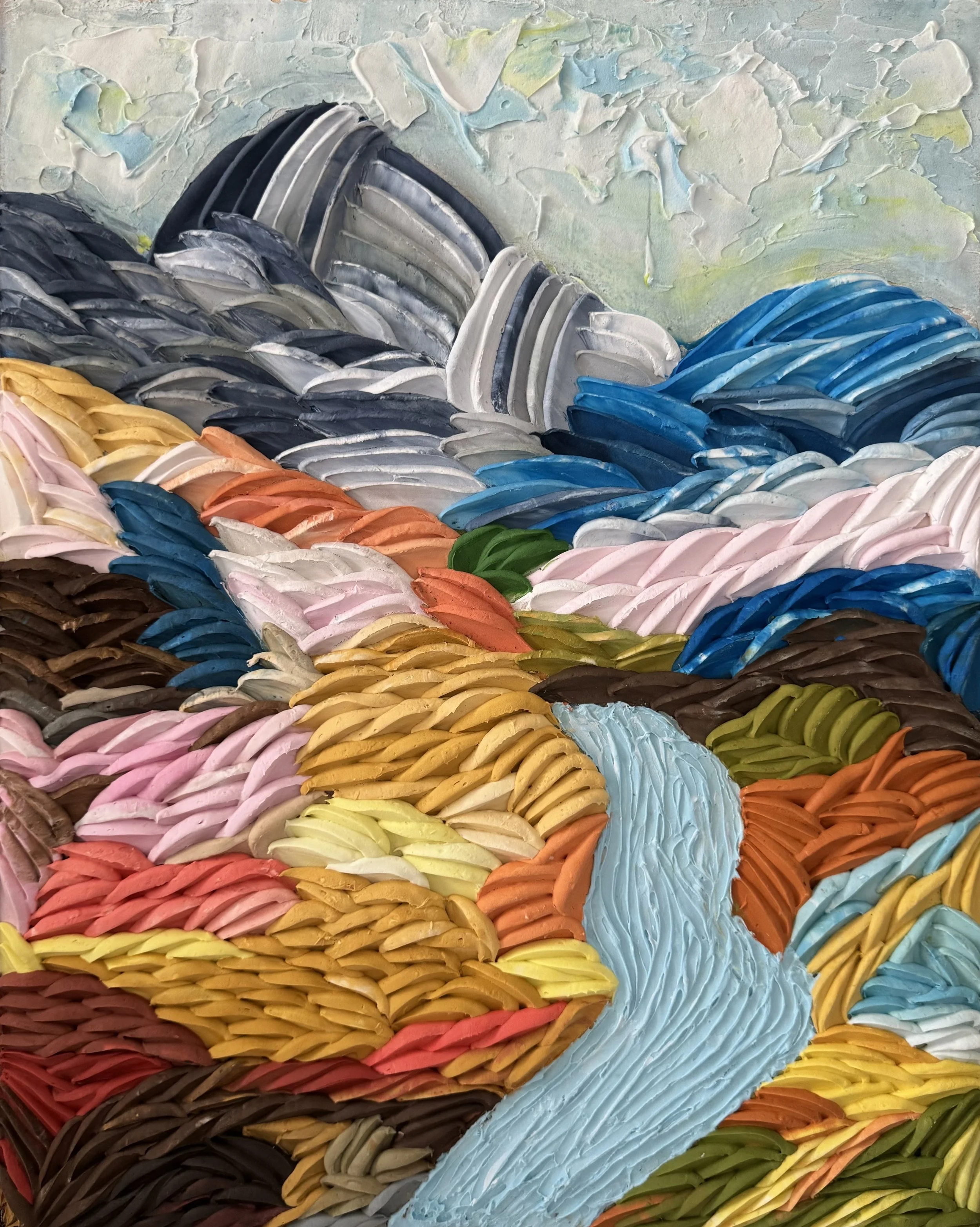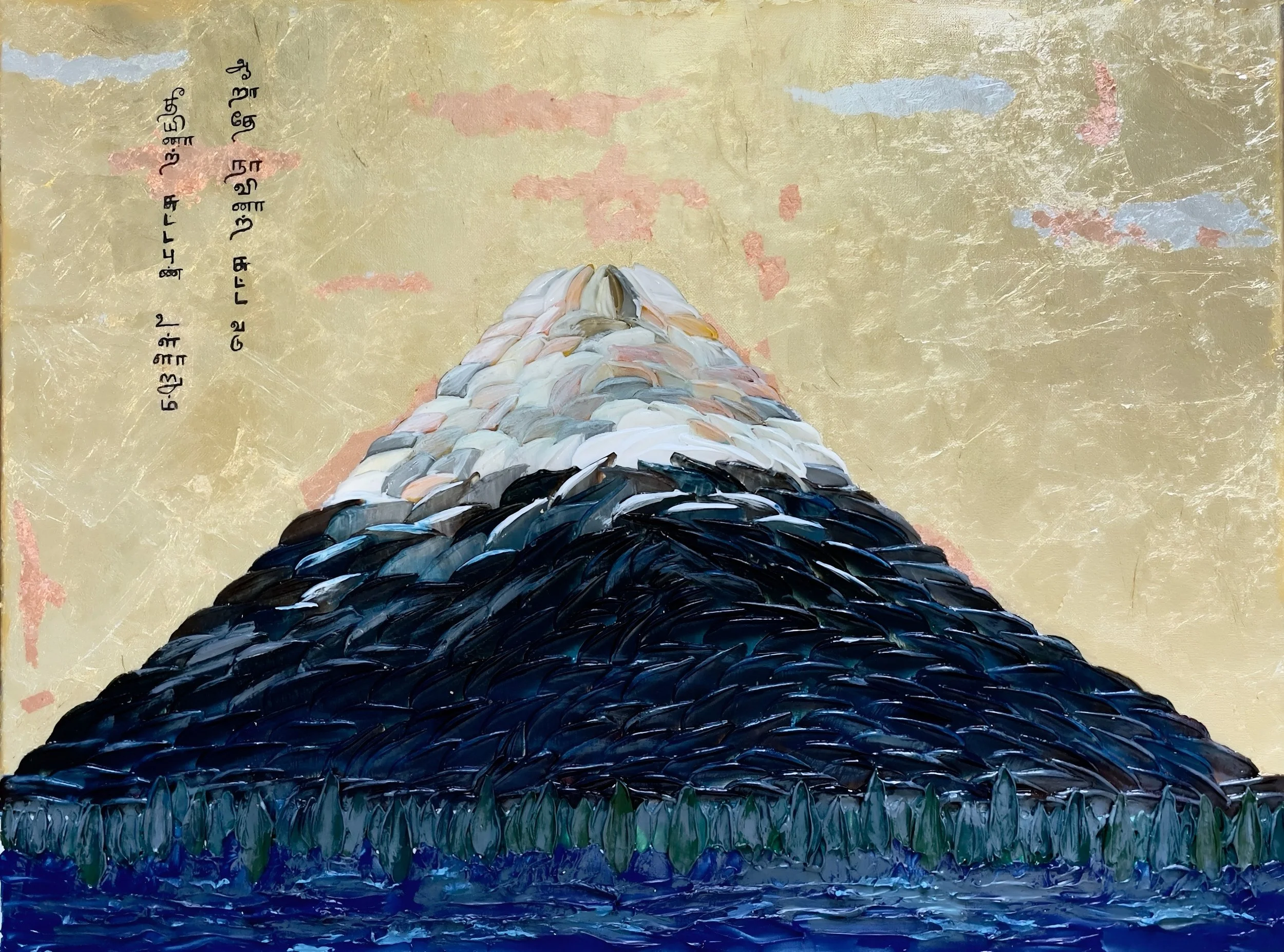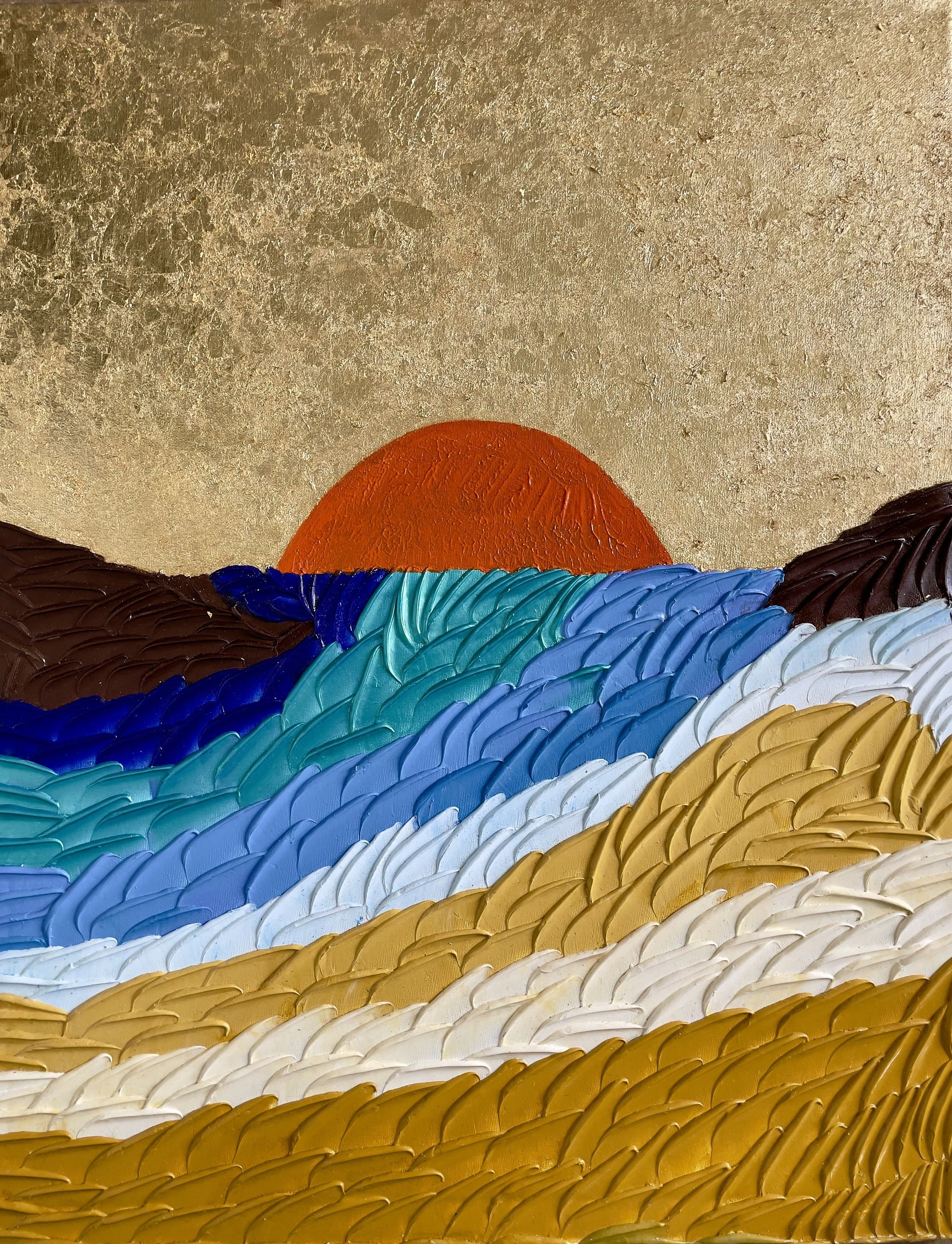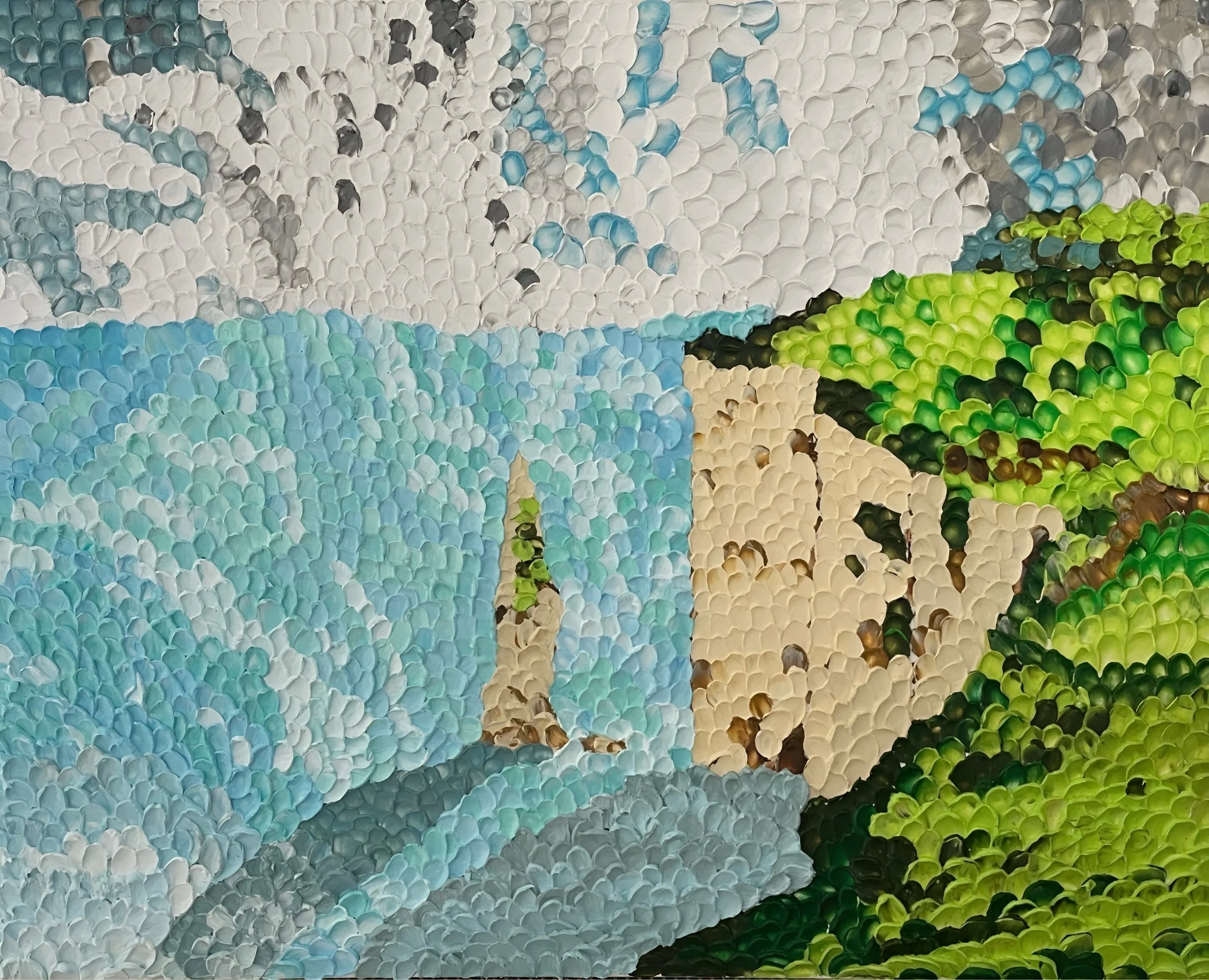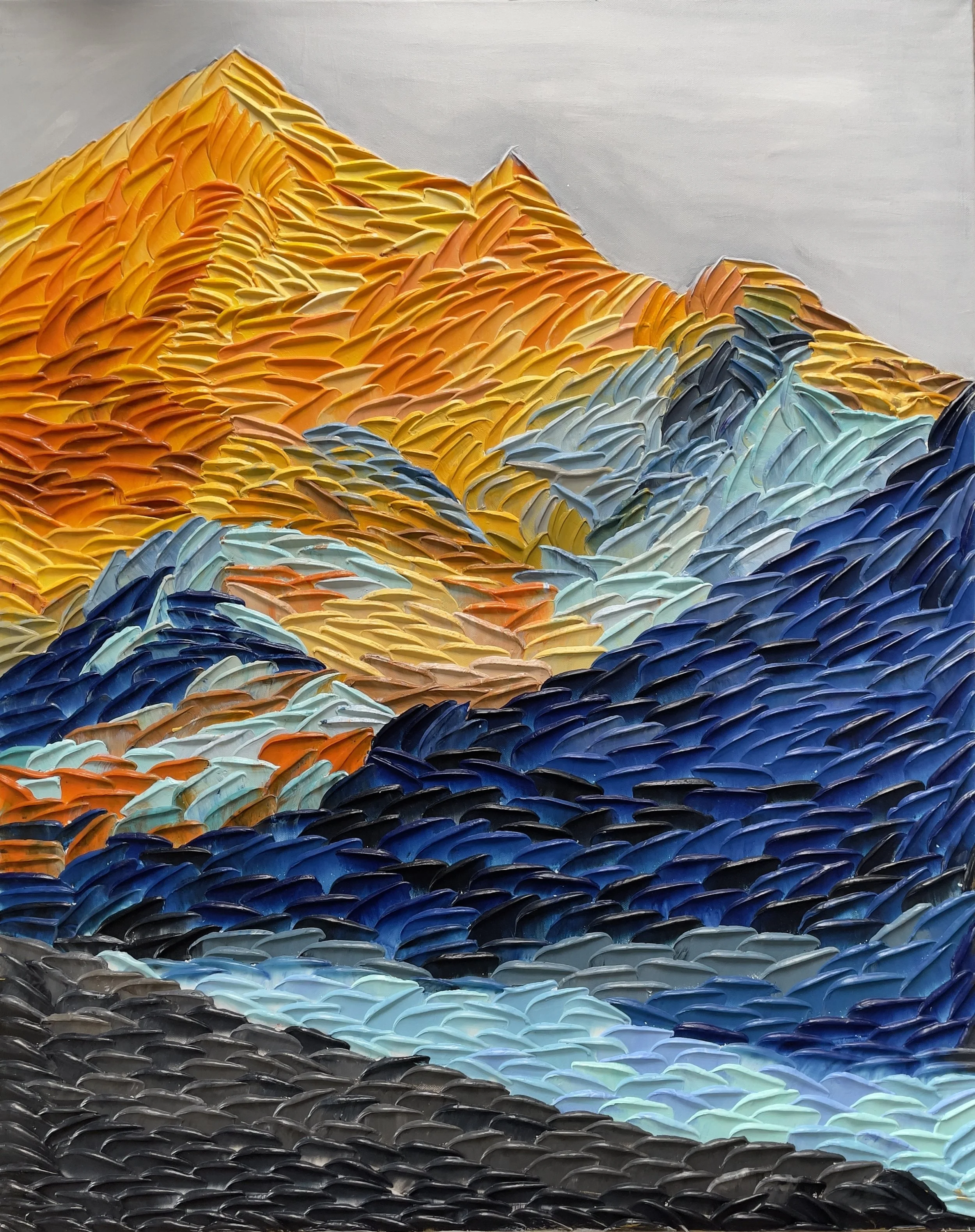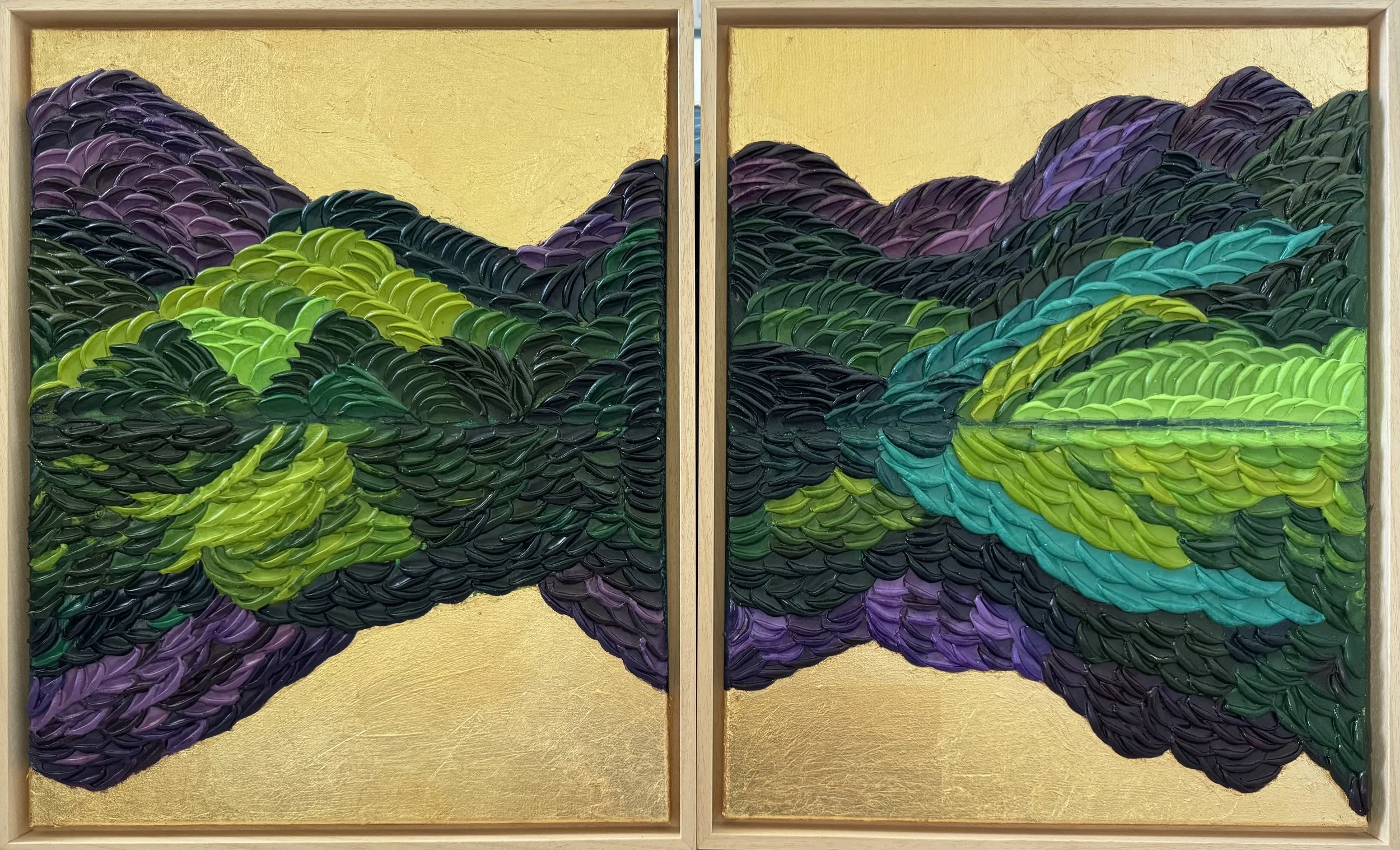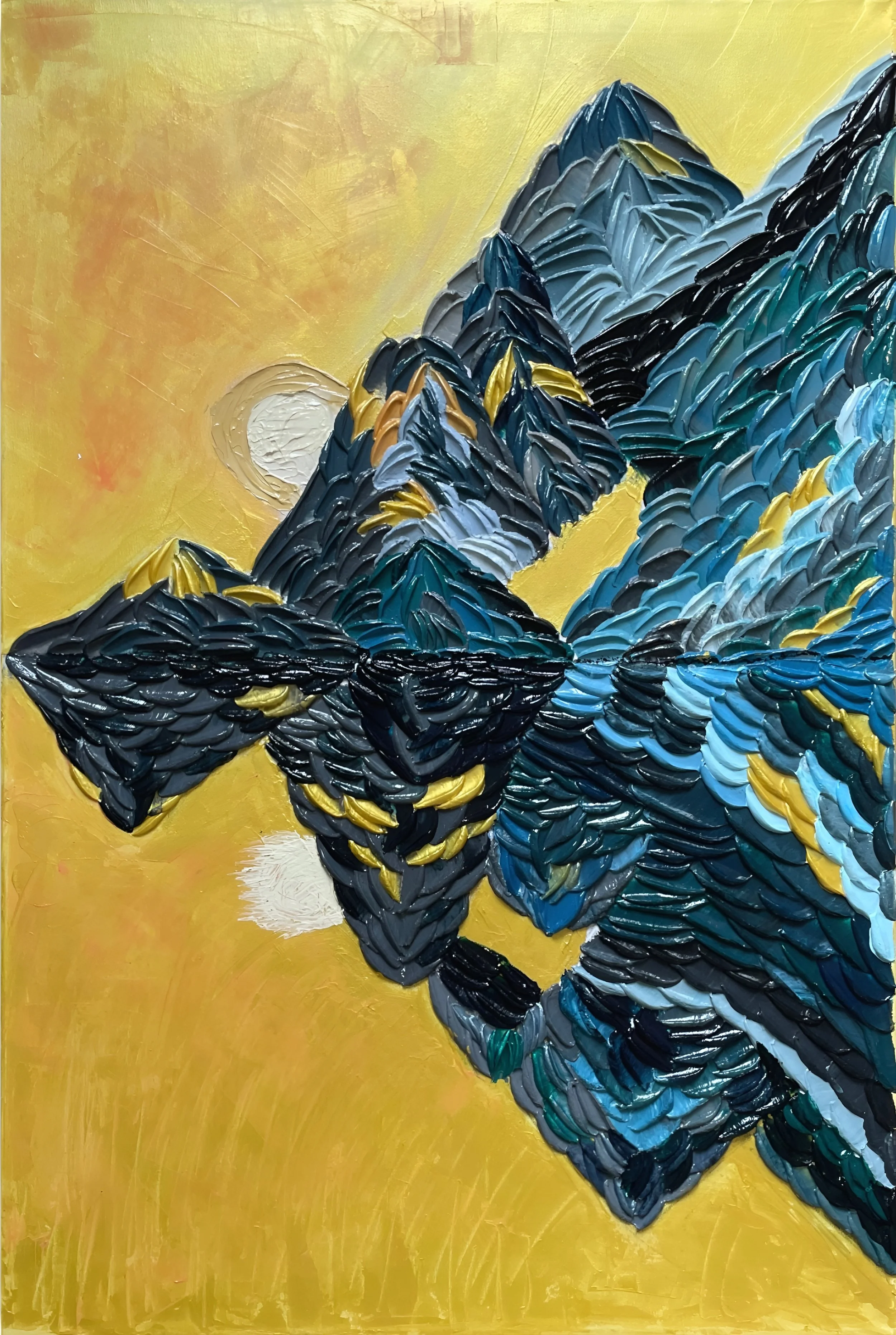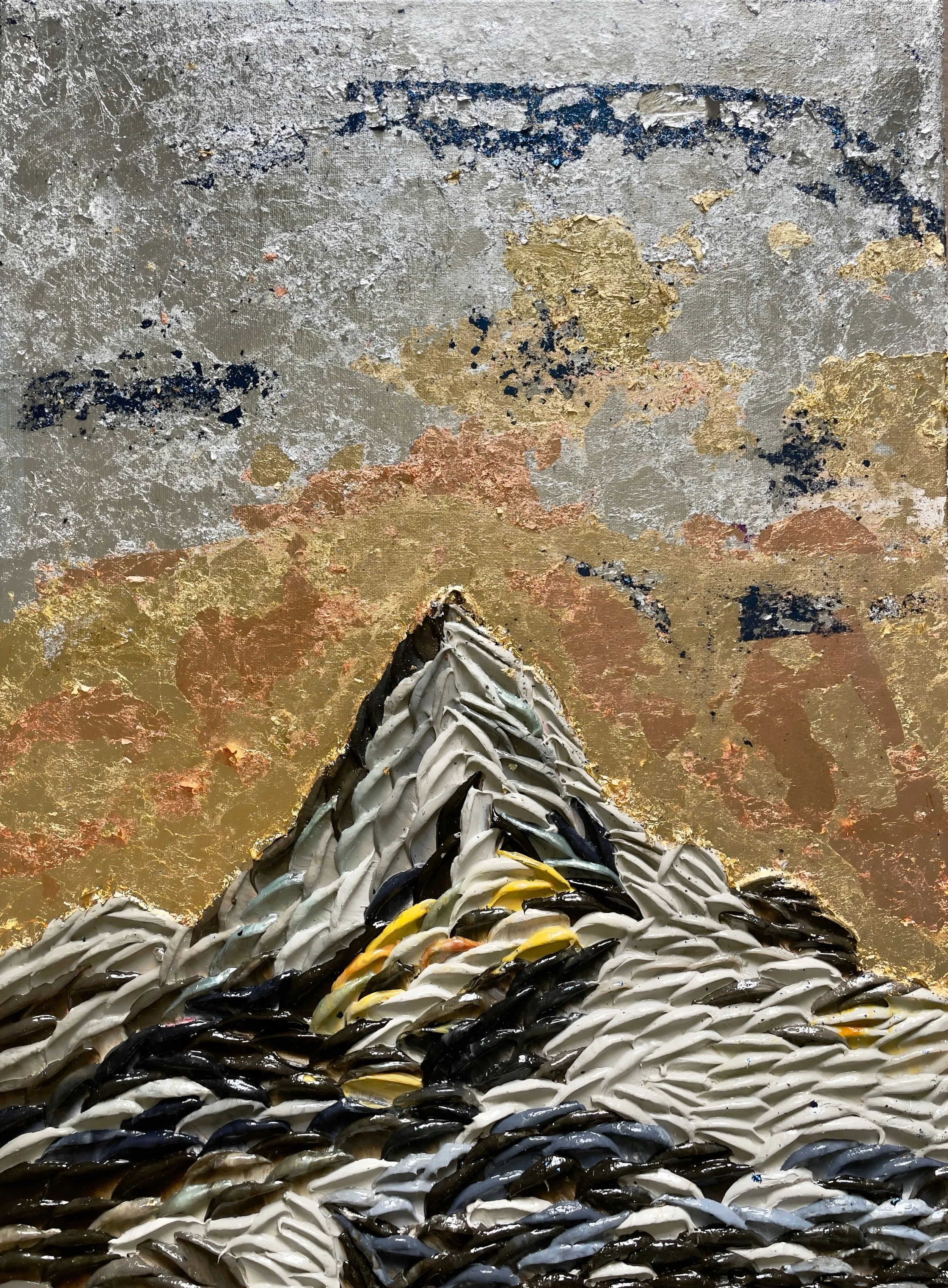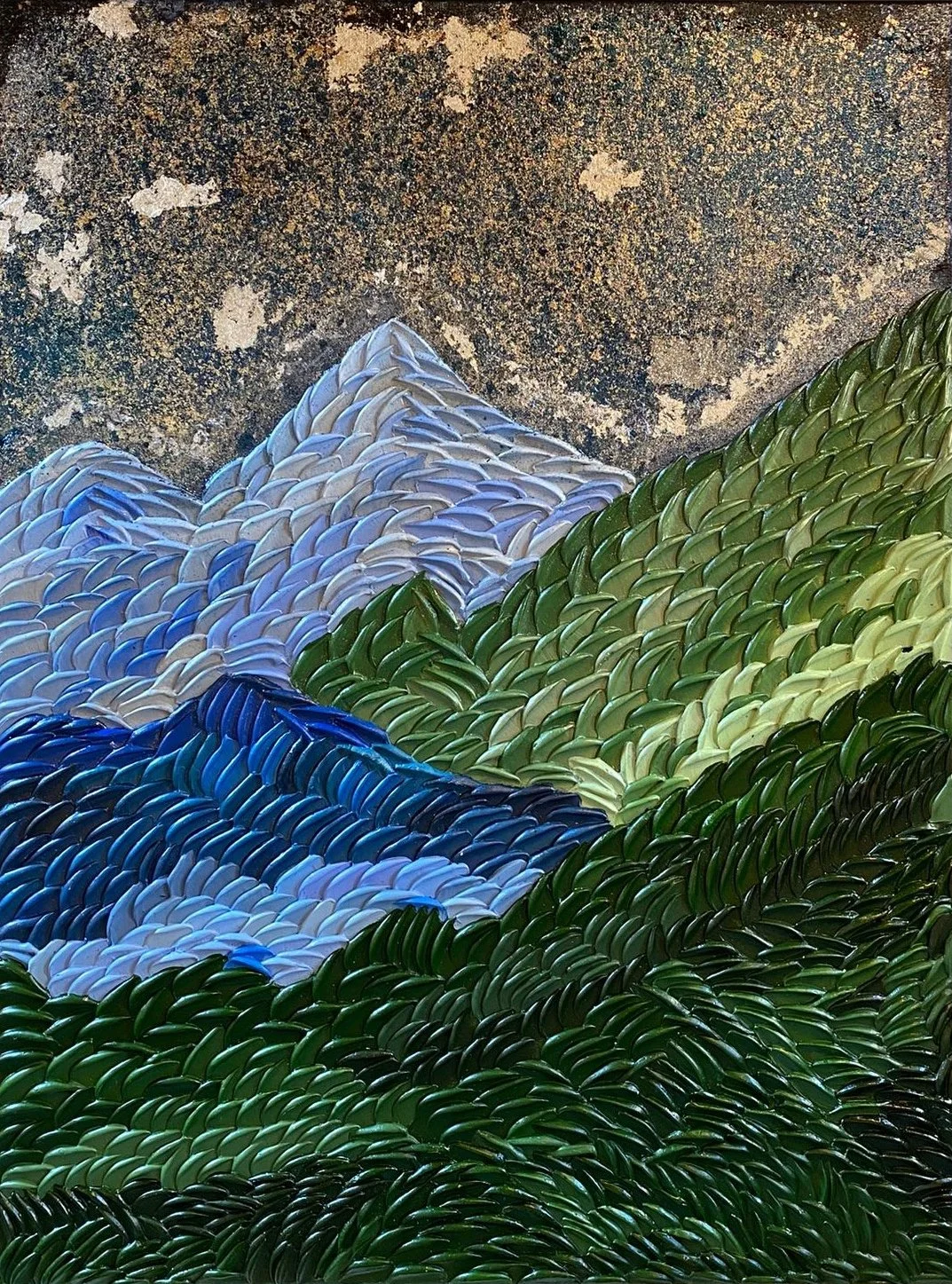Interview with Gaya Chandrasekaran
Your transition from corporate and investment banking to becoming a full-time artist is both fascinating and inspiring. What prompted this significant career change, and how has your background in finance influenced your approach to art?
I see it less as a transition and more as a convergence, two parallel tracks that are deeply complementary and central to my personal identity. Banking engages the analytical and strategic part of me, while art is my sacred space where I slow down, process my emotions, and reconnect with myself.
During my high school or university days, the intensity of academic rigor made me seek art as an outlet. With a career in banking, a world that is typically defined by hierarchy, efficiency and specialization where logic, analysis and execution take precedence, art gave me solace. What began as a coping mechanism slowly turned into a constant companion. A consistent practice that brought balance and harmony in my life.
Art is my safe space for reflection, where I explore the more intuitive, unspoken dimensions of my experience and find peace.
Growing up in Chennai, a city known for its rich cultural heritage, how do you think this environment has shaped your artistic vision and the themes you explore in your work?
Growing up in Chennai, I was surrounded by rhythm — not just of music or language, but of rituals, festivals, colours, and textures. It’s a city where the ancient coexists effortlessly with the contemporary, and that duality continues to influence my work. The vivid colours of temple architecture, the meditative geometry of kolam designs and the undulating sound of Carnatic music, found their way into my subconscious and now echo in my paintings.
My themes of Quest, Soliloquy, Rebirth, and Nirvana draw heavily from the spiritual and philosophical fabric of Indian culture. Chennai gave me an early appreciation for introspection, mythology, and transcendence — all of which continue to shape my creative practice.
The themes of Quest, Soliloquy, Rebirth, and Nirvana are central to your art. Can you share more about what each of these themes means to you and how they manifest in your creations?
Each of these themes represents a stage of human experience, both personal and universal.
Quest is the seeking — for identity, purpose, connection. It manifests in landscapes that stretch into the unknown, using bold texture to evoke the terrain of inner journeys.
Soliloquy is the inner dialogue. These pieces often have stillness, restraint, and muted palettes. They invite viewers to pause and listen to their own internal voice.
Rebirth is about transformation. In these works, layers are scraped back or reworked to reveal unexpected beauty. It's a celebration of second chances and the wisdom that emerges from pain.
Nirvana is transcendence, a letting go. Here, I use luminosity, gold leaf, and light textures to evoke a sense of peace and spiritual release.
These are not rigid categories but evolving threads that weave through my work depending on what I am processing internally.
You mentioned that your creative process begins with a broad idea and evolves organically. Could you walk us through a typical workflow for creating a piece, from conception to completion?
I've been an avid hiker since childhood. I have hiked across the Eastern and Western Ghats of India as well as across parts of the UK, including the highest peak, Ben Nevis, over 3 times. Thus nature brings an added layer of inspiration with landscapes always giving me a sense of expansiveness needed for pause and self-reflection.
It usually begins with a feeling — a sense of emotional charge I want to express. Sometimes it’s rooted in memory, a place, or a philosophical musing. I start with sketching or journaling, just to clarify the essence.
Then comes the tactile part — I select my base texture, often building it in layers using gel mediums and palette knives. I rarely plan the final image. Instead, I respond to what emerges, pausing between layers to evaluate depth, balance, and energy. Gold leaf, if used, is usually added at the end — almost like sealing in the spirit of the piece.
The process can take days or even weeks. I allow space for the artwork to breathe, revisiting it over time until it feels resolved.
Your use of texture and materials, especially your work with acrylics, gel mediums, and gold leaf, is striking. What draws you to these materials, and how do they help you convey the depth of your themes?
I am drawn to texture because life, to me, is textured — layered with experience, memory, emotion. Acrylics offer speed and versatility, allowing me to work in intuitive bursts. Gel mediums let me build tactile depth — an echo of geological and emotional layering.
Gold leaf, for me, is more than just a material — it symbolizes light and abundance. It evokes the richness of inner growth and the luminosity that can emerge even from life’s most textured, complex layers.
These materials allow me to blur the line between painting and sculpture — to make the intangible feel tangible.
Your art has been exhibited across the globe, including your first solo exhibition in London in 2018. Can you share one of your most memorable experiences from showing your work? How do audiences in different regions respond to your art?
One of the most memorable moments was at my first major exhibition in London when a viewer stood silently in front of one of my "Soliloquy" pieces and later said, “It felt like my own mind, reflected back to me.” That response reaffirmed my belief that even the most personal expression can become universal.
In Europe, there’s often an appreciation for the philosophical depth of my themes. In the US, collectors have responded enthusiastically to the tactile, bold nature of my technique as well as to the choice of vibrant colours, particularly gold. And in India, there’s a deeper cultural resonance with the spiritual undertones. Each region offers its own lens — and I cherish that.
The concept of giving voice to universal experiences and themes is powerful. Can you share a particular piece of yours that you feel best represents this intention, and describe the story or inspiration behind it?
One piece that captures this intention is Salty Mornings. It was inspired by the quiet stillness of early coastal walks — that moment when the world hasn't quite woken up, and everything is suspended between memory and possibility. There's a softness to it, but also a rawness — like the brine in the air, the slight ache of solitude, and the clarity that only silence can bring.
Salty Mornings belongs to my “Soliloquy” series, which explores the inner dialogue we often carry — unspoken, unresolved, and deeply human. The textured layers mirror the sediment of emotions we collect over time. I wanted this piece to evoke that fleeting yet profound space of reflection, where the viewer can slow down, breathe, and access something tender within themselves.
Ultimately, I hope it offers the same peace and presence I felt while creating it — a quiet invitation to pause and just be.
As an artist who has trained in both India and the UK, how do you navigate and blend the influences from these diverse cultural backgrounds in your art?
Training in India gave me a strong grounding in symbolism, traditional motifs, and spiritual inquiry. The UK, particularly my time at the Slade School of Fine Art, gave me the language of abstraction, experimentation, and critical discourse.
I don't try to compartmentalise the two — instead, I let them flow into each other. My palette and textures often reflect Indian sensibilities, while my conceptual approach and compositional choices are influenced by Western contemporary practice. It’s a fluid synthesis, not a fusion for the sake of aesthetics, but a true reflection of my lived reality.
You describe your art-making process as cathartic, infusing you with joy and fulfillment. How do you hope your art impacts the viewer, and what emotions or thoughts do you aim to evoke?
I hope my work offers a mirror, not a literal one, but an emotional and spiritual one. I want viewers to feel seen, held, or even challenged. If a piece evokes introspection, stillness, or a moment of calm, I consider that a success.
I’m not trying to give answers, but rather I’m inviting questions. About longing, growth, letting go, and the quiet beauty of imperfection. The ultimate aim is to create space, within the canvas and within the viewer.
Feedback from my collectors tends to indicate an overall uplifting vibe they have felt in the presence of my artworks.
Looking forward, are there new themes or techniques you are eager to explore in your art? How do you see your work evolving in the coming years?
I'm currently drawn to the idea of sacred pauses, liminal spaces in life where transformation brews quietly, I think motherhood is a classic example of identity shifts and such transformation in women.
I want to explore softer palettes and more negative space, to allow silence to speak louder. I’m also interested in exploring minimalist style.
I’m also pursuing an Art Therapy Practitioners Course and want to see how I can facilitate healing through my creative expression.
At a deeper level, I see my work becoming more refined and distilled; fewer strokes with greater impact. Pared down like poetry but rich with emotion.
Golden Reflections
Fall Valley
Mt Fuji
Golden Dawn
Salty Mornings
Mighty Rise
Tidings Anew
Rippling Reflections #1 Diptych
Mirror Mirror Burning Bright
Candyfloss Mountains
Inverted Infinity
Secret Swirls
. Matterhorn
Moon River
Bucolic Slopes
